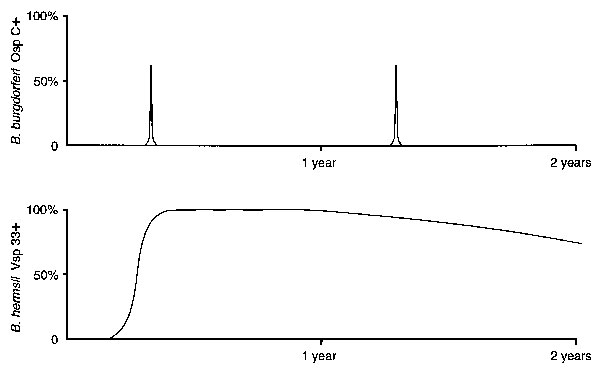Volume 8, Number 2—February 2002
Perspective
Vector Interactions and Molecular Adaptations of Lyme Disease and Relapsing Fever Spirochetes Associated with Transmission by Ticks
Figure 4

Figure 4. Schematic representation of the presence of OspC on Borrelia burgdorferi and variable small protein (Vsp) 33 on B. hermsii during infection in their respective tick vectors. Shown is the proportion of spirochetes detected with double-label immunofluorescence stains that includes either anti-outer surface protein C (Osp C) antibody (top) or anti-Vsp33 antibody (bottom). B. burgdorferi produces OspC in the midgut of Ixodes scapularis for only a few days, starting after these ticks have attached and begun to feed. During the 3 to 5 days of tick feeding, these spirochetes replicate, disseminate from the midgut, and are transmitted via saliva. In contrast, B. hermsii gradually upregulates the synthesis of Vsp33 after infecting Ornithodoros hermsi, and essentially all the spirochetes express the protein during persistent infection of the tick salivary glands.